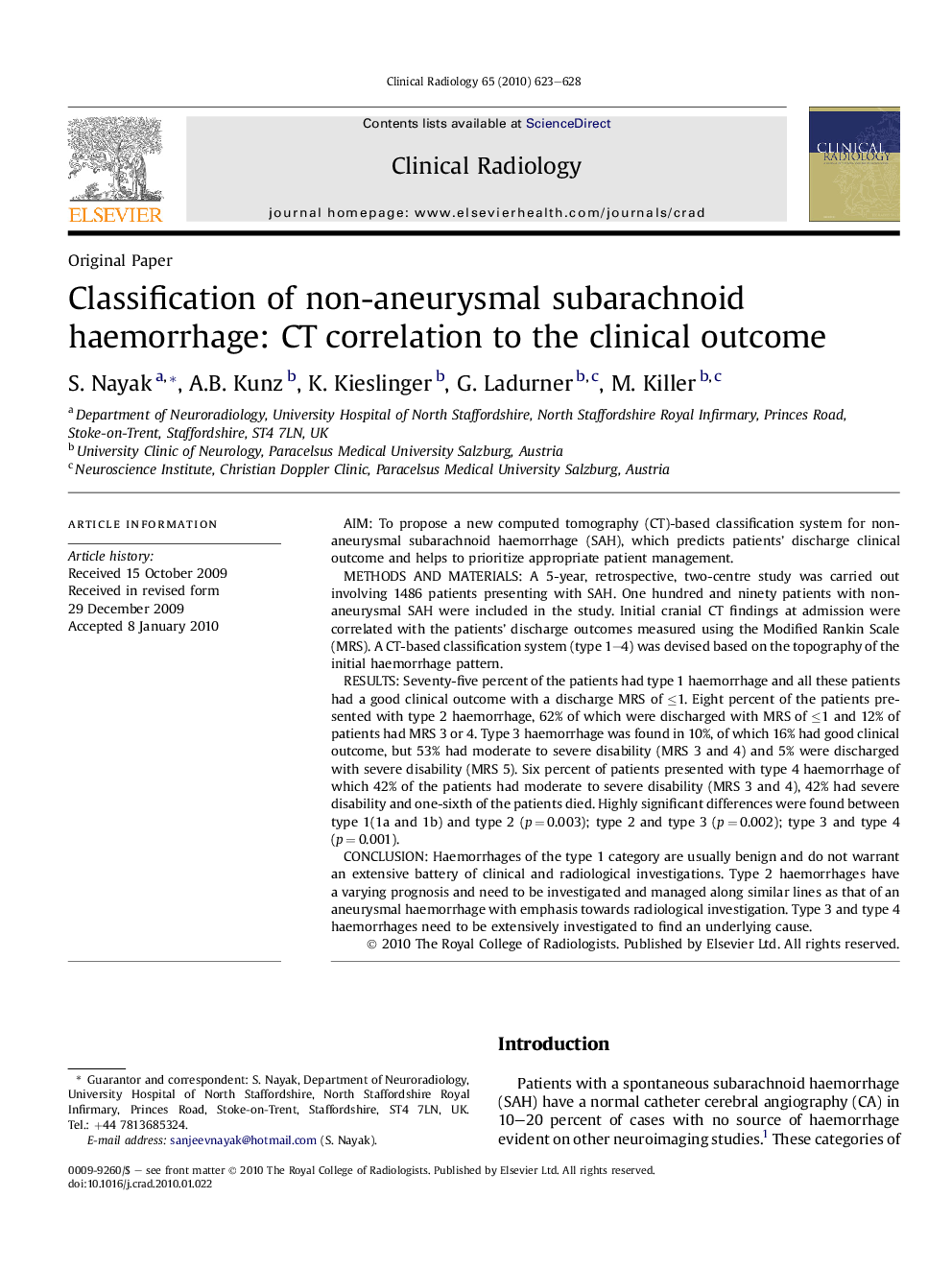| Article ID | Journal | Published Year | Pages | File Type |
|---|---|---|---|---|
| 3983696 | Clinical Radiology | 2010 | 6 Pages |
AimTo propose a new computed tomography (CT)-based classification system for non-aneurysmal subarachnoid haemorrhage (SAH), which predicts patients' discharge clinical outcome and helps to prioritize appropriate patient management.Methods and materialsA 5-year, retrospective, two-centre study was carried out involving 1486 patients presenting with SAH. One hundred and ninety patients with non-aneurysmal SAH were included in the study. Initial cranial CT findings at admission were correlated with the patients’ discharge outcomes measured using the Modified Rankin Scale (MRS). A CT-based classification system (type 1–4) was devised based on the topography of the initial haemorrhage pattern.ResultsSeventy-five percent of the patients had type 1 haemorrhage and all these patients had a good clinical outcome with a discharge MRS of ≤1. Eight percent of the patients presented with type 2 haemorrhage, 62% of which were discharged with MRS of ≤1 and 12% of patients had MRS 3 or 4. Type 3 haemorrhage was found in 10%, of which 16% had good clinical outcome, but 53% had moderate to severe disability (MRS 3 and 4) and 5% were discharged with severe disability (MRS 5). Six percent of patients presented with type 4 haemorrhage of which 42% of the patients had moderate to severe disability (MRS 3 and 4), 42% had severe disability and one-sixth of the patients died. Highly significant differences were found between type 1(1a and 1b) and type 2 (p = 0.003); type 2 and type 3 (p = 0.002); type 3 and type 4 (p = 0.001).ConclusionHaemorrhages of the type 1 category are usually benign and do not warrant an extensive battery of clinical and radiological investigations. Type 2 haemorrhages have a varying prognosis and need to be investigated and managed along similar lines as that of an aneurysmal haemorrhage with emphasis towards radiological investigation. Type 3 and type 4 haemorrhages need to be extensively investigated to find an underlying cause.
